We are Specialists in sourcing “hard to find” military specified Western Platform aircraft spares from the OEM / OEM Approved Distributors as per customer specifications/ drawings. With the our Robust network and associations with various Original Equipment Manufacturer (OEM) across the globe helps us to source and deliver the parts on exceptional speed and accuracy to meet AOG / Critical requirements of our customers .
Our team members are well trained and possess sound product knowledge which make sure correct parts are sourced with all airworthiness standards and certifications. We are strongly and strategically positioned to supply Aircraft spares for Western Platform which are as follows:
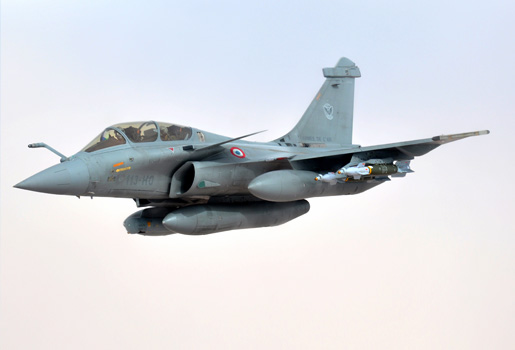
DASSAULT RAFALE AIRCRAFT
4TH GENERATION TWIN-ENGINED FIGHTERS
The Dassault Rafale (French pronunciation: [ʁafal], meaning “gust of wind”, and “burst of fire”) is a French twin-engine, canard delta wing, multirole fighter aircraft designed and built by Dassault Aviation. Rafale was introduced in 2001, and is being produced for both the French Air Force and for carrier-based operations in the French Navy. The Rafale is equipped with a wide range of weapons, and is intended to perform air supremacy, interdiction, aerial reconnaissance, ground support, in-depth strike, anti-ship strike and nuclear deterrence missions. The Rafale has been selected for purchase by the Indian Air Force, the Egyptian Air Force, and the Qatar Air Force. The Rafale has been used in combat over Afghanistan, Libya, Mali, Iraq and Syria. Several upgrades to the weapons and avionics of the Rafale are planned to be introduced by 2018.
SEPECAT JAGUAR AIRCRAFT
TACTICAL NUCLEAR CARRYING AND GROUND ATTACK AIRCRAFT
The SEPECAT Jaguar is an Anglo-French jet attack aircraft, originally used by the British Royal Air Force and the French Air Force in the close air support and nuclear strike role, and still in service with the Indian Air Force. In 1960s Jaguar was conceived as a jet trainer with a light ground attack capability soon changed to include supersonic performance, reconnaissance and tactical nuclear strike roles.
A Memorandum of Understanding was signed in May 1965 for the two countries to develop two aircraft, a trainer based on the ECAT, and the larger AFVG (Anglo-French Variable Geometry)
In 1966 as a joint venture between Breguet and the British Aircraft Corporation to produce the airframe and an innovative French-designed landing gear, the Jaguar was built incorporating major elements of design from BAC – notably the wing and high lift devices. The aircraft served with the French Air Force as the main strike/attack aircraft until July 2005, and with the Royal Air Force until the end of April 2007.

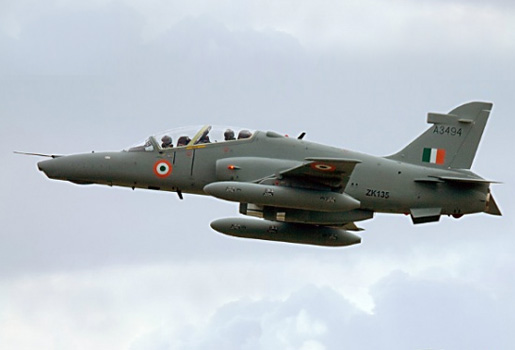
BAE HAWK HS 748 AIRCRAFT
MEDIUM-SIZED TURBOPROP AIRLINER
The BAE Systems Hawk is a British single-engine, jet-powered advanced trainer aircraft. In 1974 it was first flown at Dunsfold, Surrey, as the Hawker Siddeley Hawk, and subsequently produced by its successor companies, British Aerospace and BAE Systems, respectively. It has been used in a training capacity and as a low-cost combat aircraft.
Operators of the Hawk include the Royal Air Force and a considerable number of foreign military operators. The Hawk is still in production in the UK and under licence in India by Hindustan Aeronautics Limited (HAL) with over 900 Hawks sold to 18 operators around the world.
HAL TEJUS AIRCRAFT
SINGLE-SEAT, SINGLE-JET ENGINE, MULTI-ROLE LIGHT FIGHTER AIRCRAFT
The HAL Tejas is an Indian aircraft designed for the Indian Air Force and Navy by the Aeronautical Development Agency (ADA) and Hindustan Aeronautics Limited (HAL). It has single-seat, single-jet engine, multi-role light fighter. The aircraft has a tail-less compound delta-wing configuration, which gives it high manoeuvrability. The aircraft was officially named “Tejas” in 2003, meaning “Radiant” in Sanskrit by the then Prime Minister Atal Bihari Vajpayee. It is the smallest and lightest in its class of contemporary supersonic combat aircraft. The Tejas is the second supersonic fighter developed by Hindustan Aeronautics Limited (HAL) after the HAL HF-24 Marut. It came from the Light Combat Aircraft (LCA) programme, which began in the 1980s to replace India’s ageing MiG-21 fighters.
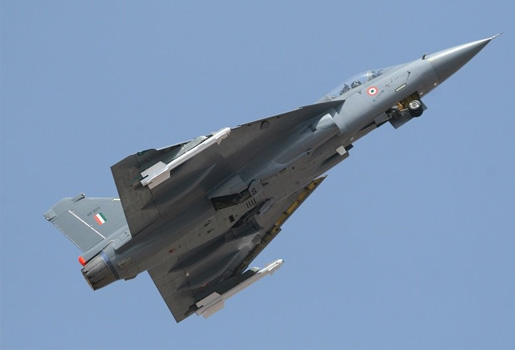
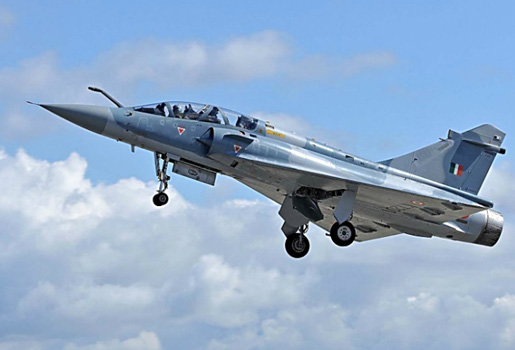
Mirage 2000
MULTIROLE FIGHTER PLANE
The Mirage 2000 is a French multirole, single-engine fourth-generation jet fighter manufactured by Dassault Aviation. It was designed in the late 1970s as a lightweight fighter based on the Mirage III for the French Air Force.
Capable of carrying nuclear weapons, it was the precision bombing during the Kargil War by the Mirage 2000 that was responsible for flushing out the bad guys. The fleet is being upgraded to I/TI standard and will remain in service till 2040.
HAL HJT-16 KIRAN AIRCRAFT
SINGLE ENGINE TWO SEAT JET TRAINER AIRCRAFT
The HAL HJT-16 Kiran (“Ray of light”) is a two-seat intermediate jet trainer built by Hindustan Aeronautics Limited. It is used for intermediate training for pilots trained on the HPT-32 Deepak by the Indian Air Force. The Indian naval aerobatic team Sagar Pawan and the Indian Air Force aerobatic team Surya Kiran used this aircraft to train fighter pilots. The Kiran was designed to meet an Indian air force requirement for an intermediate jet trainer.
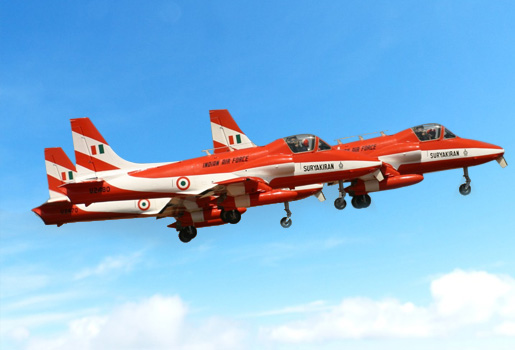
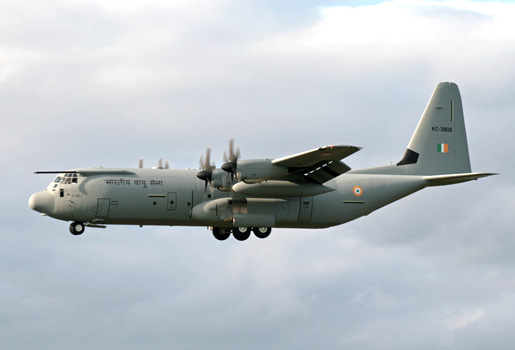
LOCKHEED MARTIN C 130J SUPER HERCULES
FOUR-ENGINE TURBOPROP MILITARY TRANSPORT AIRCRAFT
The C-130J is a comprehensive update of the Lockheed C-130 Hercules, with new engines, flight deck, and other systems. The Hercules family has the longest continuous production run of any military aircraft in history.
The original Hercules made its first flight back in 1954. It has the longest production run of any military aircraft. It is the West’s most popular and widely used military transport aircraft. The C-130J Super Hercules is used for troop and cargo transport. Basic airframe of the C-130 has changed very little. However the aircraft has a number of improvements, including new engines, avionics and other systems.
BOEING C-17 GLOBEMASTER
HIGH-WING, 4-ENGINE, T-TAILED MILITARY-TRANSPORT AIRCRAFT
The C-17 can carry large equipment, supplies and troops directly to small airfields in harsh terrain anywhere in the world day or night. The massive, sturdy, long-haul aircraft tackles distance, destination and heavy, oversized payloads in unpredictable conditions. It has delivered cargo in every worldwide operation since the 1990s.
Capable of landing on unprepared landing strips. The IAF landed one of its C-17 at Daulat Beg Oldie, one of the highest airstrips in the world.
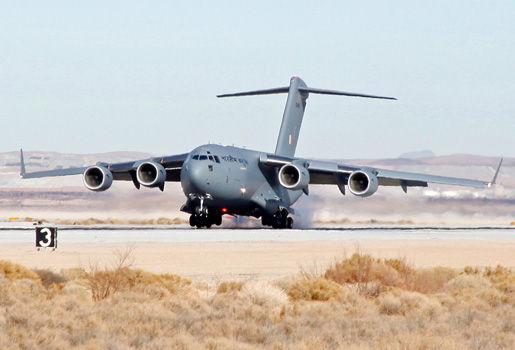
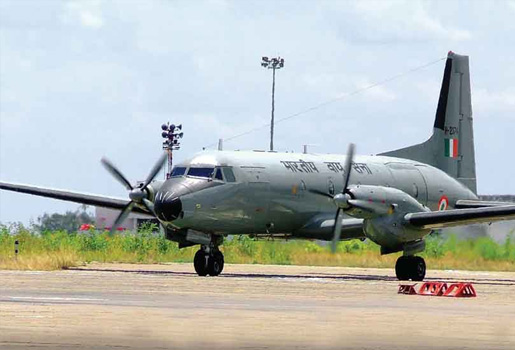
HS -748 (AVRO) AIRCRAFT
A.V. ROE AND COMPANY
The Avro Vulcan (later Hawker Siddeley Vulcan from July 1963) manufacturer A.V. Roe and Company (Avro) is a strategic bomber and jet powered for high altitude operations and used by Royal Air Force (RAF) from 1956 until 1984. Vulcan is designed as per specifications of B.35/46.it is considered as most technically advanced and hence risky.
EMB-145 AWACS
INDEPENDENT MONITORING AND AIR TRAFFIC CONTROL SYSTEM
The Embraer EMB-145 AEW&C or AWACS (English Airborne Early Warning and Control) or E-99, is an aircraft Airborne Early Warning and Control with capacity for independent monitoring and air traffic control. Designed to meet the operational requirements of Brazilian Air Force (FAB), for an aerial surveillance aircraft, capable of providing intelligence data on aircraft flying at low altitude, specially in Brazilian Amazon, doing missions in support of SIVAM.
The main sensor of the EMB-145 AEW&C is on the multi-role radar Ericsson PS-890 Erieye, antenna flat type scanning electron active, characterized by not depend on the swivel 360 degree aerial search, common to other radars of airborne surveillance.

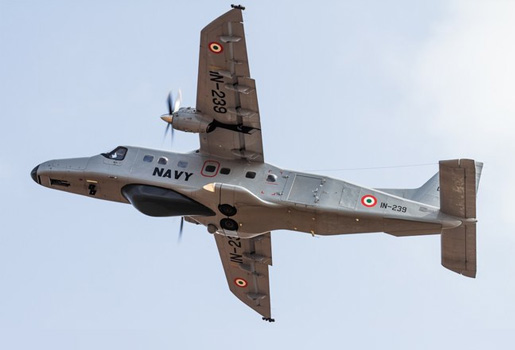
DORNIER – DO 228
HINDUSTAN AERONAUTICS LTD., INDIA
The Dornier Do 228 manufactured by Dornier GmbH (later DASA Dornier, Fairchild-Dornier from 1981 until 1998), is a twin-turboprop STOL utility aircraft. Hindustan Aeronautics (HAL) bought a production licence In 1983, and manufactured 125 aircraft for the Asian market sphere. Approximately 270 Do 228 were built at Oberpfaffenhofen, Germany and Kanpur, India. In August 2006, 127 Dornier Do 228 aircraft (all variants) remain in airline service.
PLIATUS PC-7
BASIC TRAINER AIRCRAFT
The two-seat light trainer aircraft Pilatus PC-7 turbo was built by Pilatus Aircraft in Switzerland. It can perform various functions, including aerobatics and tactical and night flying.
The PC-7 can accommodate a crew of two members (a student and trainer) and has six underwing hardpoints.
Selected by 20 air forces to train military pilots, the aircraft is fully operational in civil and military pilot training bases worldwide, and is equipped with a single Pratt and Whitney PT6A-25A turboprop engine.
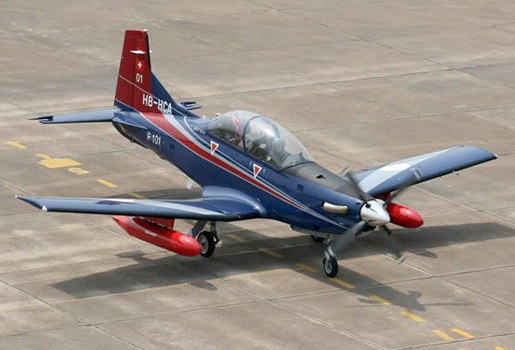
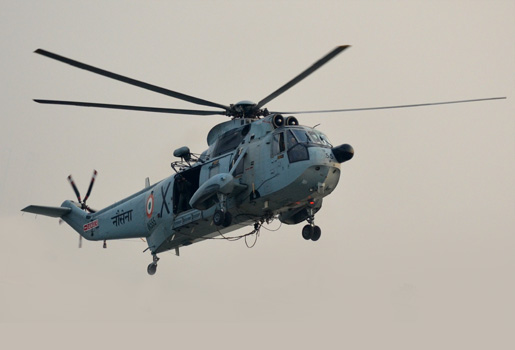
SEAKING–MK42B/C
AGUSTA WESTLAND LIMITED UNITED KINGDOM
The Westland WS-61 Sea King is the version of American Sikorsky S-61 helicopter built with British license. It was primarily designed for anti-submarine warfare (ASW). One variant of Sea King is Commando used for troop transport.
The Sea King is popular as Royal Navy Search and Rescue (red and gray livery) helicopter and RAF Search and Rescue Force (yellow livery). It is also adapted for the Royal Navy ship based airborne early warning platform.
UH-3H /S61 HELICOPTER
SIKORSKY UNITED STATES
The Sikorsky SH-3 Sea King (company designation S-61) designed and built by Sikorsky Aircraft, an American twin-engine anti-submarine warfare (ASW) helicopter. It was the world’s first amphibious helicopter and one of the first ASW rotorcraft to use turboshaft engines.
This model is popular in civil as well as military service and in service in many countries around the world. S-61L and S-61N.are the main civil versions.
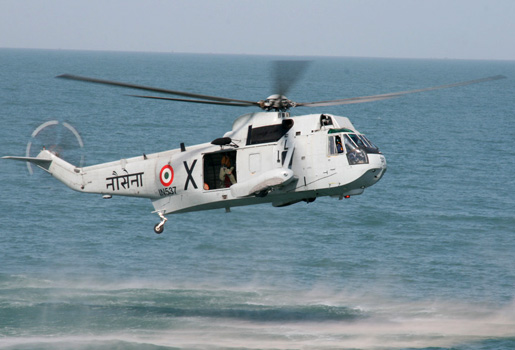
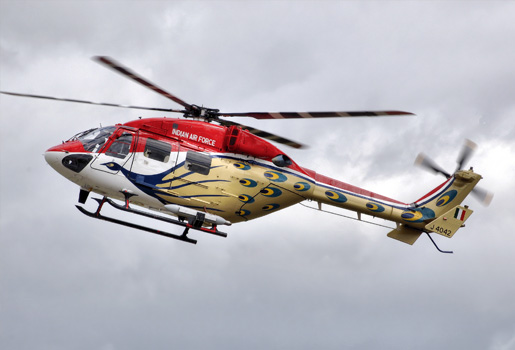
DHRUV ALH HELICOPTER
A LIGHT MULTIROLE AND MULTIMISSION HELICOPTER
The Dhruv entered service in 2002. It is designed to meet the requirement of both military and civil operators, with military variants of the helicopter being developed for the Indian Armed Forces, while a variant for civilian/commercial use has also been developed. The helicopter was first exported to Nepal and Israel.
Military versions in production include transport, utility, reconnaissance and medical evacuation variants. Based on the Dhruv platform, the HAL Light Combat Helicopter (LCH) a dedicated attack helicopter and HAL Light Utility Helicopter (LUH), a utility and observation helicopter, are currently being developed.
HAL CHETAK
MULTI-ROLE, SEVEN SEATER HELICOPTER
The Chetak Multipurpose Helicopter is an improved version of Alouette III and was awarded civil airworthiness certificate on 12 Dec 1961. It has a tricycle type undercarriage and can carry seven passengers including the pilots. The Helicopter Division manufactures the versatile and Multipurpose Chetak Helicopters for Civil and Military applications both for Domestic and International customers. The Chetak Helicopter is a multi-role, seven seater Helicopter, spacious and simple in design, the Chetak is highly maneuverable and well suited to flying over sea, tropical and desert conditions.
An important component of carrier operations is a helicopter which can be used for various purposes such as search-and-rescue operations when a plane-guard ship is not available, reconnaissance, anti-submarine warfare, and antiship operations using torpedoes and short-range missiles.
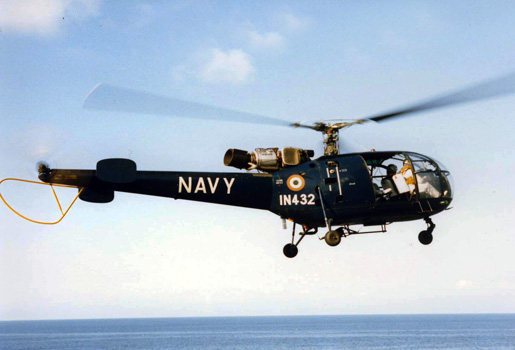
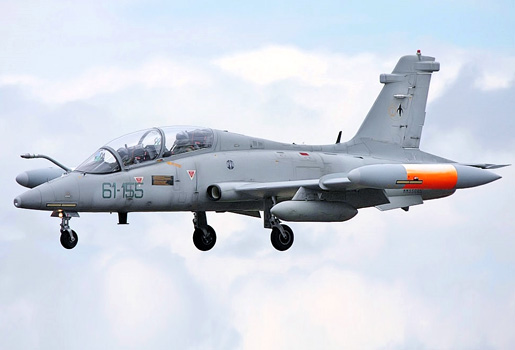
AERMACCHI MB-339
ADVANCED TRAINER / LIGHT ATTACK AIRCRAFT
The Aermacchi MB-339 is a military jet trainer and light attack aircraft designed and manufactured by Italian aviation company Aermacchi. The MB-339 was developed during the 1970s in response to an Italian Air Force requirement to replace existing fleet of Aermacchi MB-326. Its design was derived from MB-326, and thus the two aircraft share considerable similarities in terms of their design. MB-339 was capable of satisfying all of the specified requirements while being the most affordable option available. The maiden flight of the MB-339 took place on 12 August 1976; Primary users are Italian Air Force, Royal Malaysian Air Force Eritrean Air Force and United Arab Emirates Air Force.
AÉROSPATIALE ALOUETTE III
LIGHT MULTIROLE HELICOPTER
The Aérospatiale Alouette III is a single-engine, light utility helicopter developed in 1960 by French aircraft company Sud Aviation. During its production life, it proved to be a relatively popular rotorcraft; including multiple licensed manufacturers, in excess of 2,000 units were constructed. It is an enlarged derivative of the earlier and highly successful Alouette II. With an extra pair of seats and other refinements, it quickly became a commercial success amongst both civil and military customers. Further variants were SA 315B Lama, in 1971. The type was also built under licence by Hindustan Aeronautics Limited (HAL) in India as the HAL Chetak. Primery users are French Armed Forces Rhodesian Air Force, Indian Armed Forces, Portuguese Air Force, and South African Air Force.
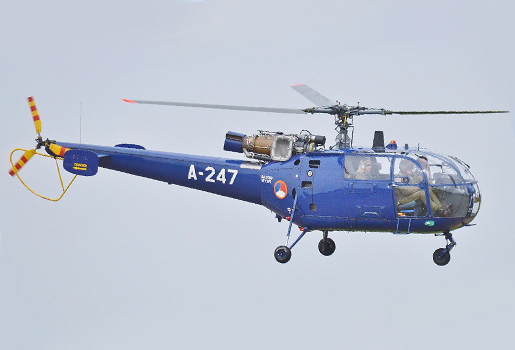
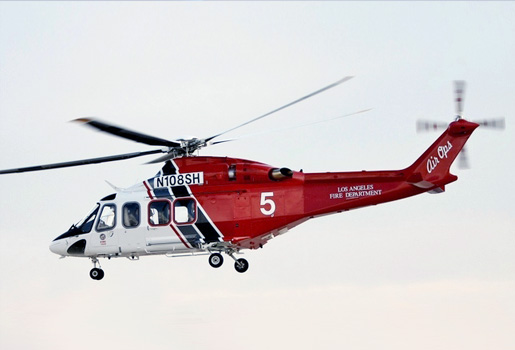
AGUSTAWESTLAND AW139
MEDIUM SAR / UTILITY HELICOPTER
The AgustaWestland AW139 is a 15-seat medium-sized twin-engined helicopter developed and produced principally by AgustaWestland. It is marketed as Medium-lift SAR/utility helicopter. In addition to AgustaWestland’s manufacturing facilities in Italy and the United States, the AW139 is produced in Russia by HeliVert, a joint venture between AgustaWestland and Russian Helicopters. The AW139 was originally designed and developed jointly by Agusta and Bell Helicopters and marketed as the Agusta-Bell AB139, being redesignated AW139 when Bell withdrew from the project. Since entering service in 2003, the AW139 has become one of AgustaWestland’s most influential products. Primery users are Italian Air Force, CHC Helicopter, Irish Air Corps, United Arab Emirates Air Force.
AIRBUS A400M ATLAS
LONG RANGE MULTIROLE TRANSPORT AIRCRAFT
The Airbus A400M Atlas is a European, four-engine turboprop military transport aircraft. It was designed by Airbus Military (now Airbus Defence and Space) as a tactical airlifter with strategic capabilities to replace older transport aircraft, such as the Transall C-160 and the Lockheed C-130 Hercules. The A400M is positioned, in terms of size, between the C-130 and the C-17; it can carry heavier loads than the C-130 and is able to use rough landing strips. The A400M can also perform aerial refuelling and medical evacuation with appropriate equipment. The A400M’s maiden flight, took place on 11 December 2009 from Seville, Spain. A total of 174 A400M aircraft had been ordered by eight nations by July 2011. In March 2013, the A400M received European Aviation Safety Agency (EASA) certification.
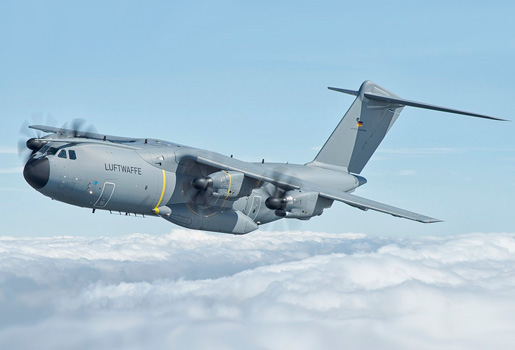
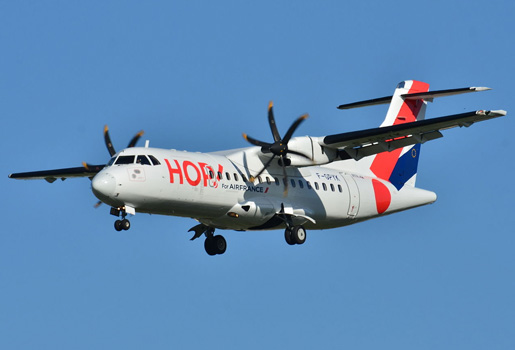
ATR 42
TWIN-TURBOPROP, SHORT-HAUL REGIONAL AIRLINER
The ATR 42 developed and manufactured in France and Italy by ATR (Aerei da Trasporto Regionale or Avions de transport régional), a joint venture formed by French aerospace company Aérospatiale (now Airbus) and Italian aviation conglomerate Aeritalia (now Leonardo S.p.A.). The number “42” in its name is derived from the aircraft’s standard seating configuration in a passenger-carrying configuration. During the 1980s, French aerospace company Aérospatiale and Italian aviation conglomerate Aeritalia merged their separate work and established, ATR, for the purpose of developing, manufacturing, and marketing their first airliner, which was later designated as the ATR 42. and technology with Airbus SE.
ATR 72
TURBOPROP REGIONAL AIRLINER
The ATR 72 is a twin-engine turboprop, short-haul regional airliner developed and produced in France and Italy by aircraft manufacturer ATR (Aerei da Trasporto Regionale or Avions de transport régional), a joint venture formed by French aerospace company Aérospatiale (now Airbus) and Italian aviation conglomerate Aeritalia (now Leonardo S.p.A.). The number “72” in its name is derived from the aircraft’s standard seating configuration in a passenger-carrying configuration. On 27 October 1989, Finnish airline Finnair became the first airline to operate the type in revenue service. The ATR 72 has also been used as a corporate transport, cargo aircraft, and maritime patrol aircraft.
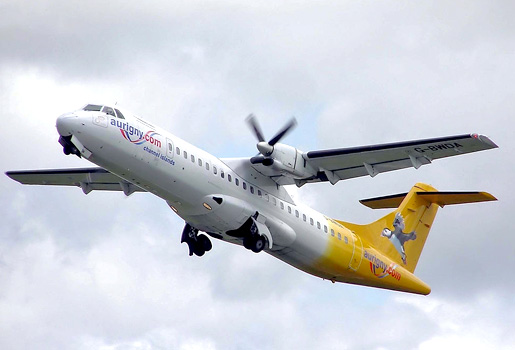
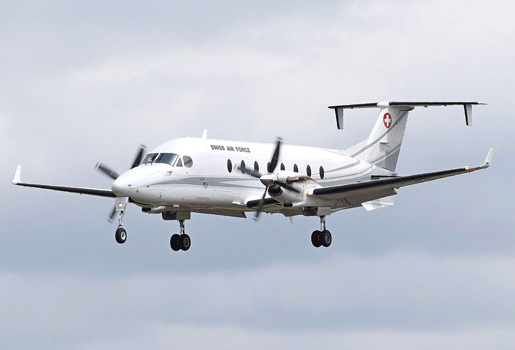
BEECHCRAFT 1900
TWIN-ENGINE TURBOPROP COMMERCIAL AIRCRAFT
The Beechcraft 1900 is a 19-passenger, pressurized twin-engine turboprop fixed-wing aircraft that was manufactured by Beechcraft. It was designed, and is primarily used, as a regional airliner. It is also used as a freight aircraft and corporate transport, and by several governmental and military organisations. With customers favoring larger regional jets, Raytheon ended production in October 2002. The aircraft was designed to carry passengers in all weather conditions from airports with relatively short runways. It is capable of flying in excess of 600 miles (970 km), although few operators use its full-fuel range. It is one of the most popular 19-passenger airliners in history.
BELL 206
SUITED FOR TOURS, UTILITY MISSIONS, AERIAL SURVEYING, etc.
The Bell 206 is a family of two-bladed, single- and twin-engined helicopters, manufactured by Bell Helicopter at its Mirabel, Quebec, plant. Bell successfully marketed the aircraft commercially as the five-place Bell 206A JetRanger. The new design was eventually selected by the Army as the OH-58 Kiowa. Bell also developed a seven-place LongRanger, which was later offered with a twin-engined option as the TwinRanger, while Tridair Helicopters offers a similar conversion of the LongRanger called the Gemini ST. The ICAO-assigned model designation “B06” is used on flight plans for the JetRanger and LongRanger, and the designation “B06T” is used for the twin-engined TwinRangers.
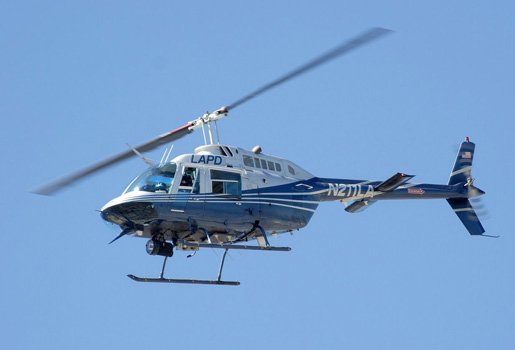
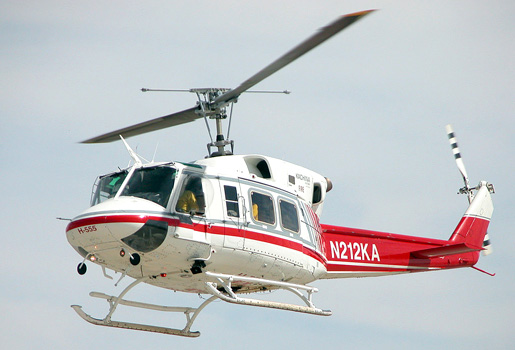
BELL 212
TWIN-ENGINED MEDIUM UTILITY HELICOPTER
The Bell 212 (also known as the Twin Two-Twelve) is a two-blade, twin-engine, medium helicopter that first flew in 1968. Originally manufactured by Bell Helicopter in Fort Worth, Texas, United States, production was moved to Mirabel, Quebec, Canada in 1988, along with all Bell commercial helicopter production after that plant opened in 1986. The 212 is marketed to civilian operators and has a fifteen-seat configuration, with one pilot and fourteen passengers. In cargo configuration the 212 has an internal capacity of 220 ft³ (6.23 m³). An external load of up to 5,000 lb (2,268 kg) can be carried. Primary user is CHC Helicopter.
BELL 412
A UTILITY AND TRANSPORT HELICOPTER
The Bell 412 is a twin-engine multipurpose utility helicopter of National origin United States/Canada, the Huey family manufactured by Bell Helicopter. It was primarily introduced in 1981. It is a development of the Bell 212, with the major difference being the composite four-blade main rotor. Number built is over 869. Primary users Royal Air Force. Some other users include Algerian Air Force, Argentine Air Force, Azerbaijani Air Force, Botswana Defence Force, Cameroon Air Force etc.
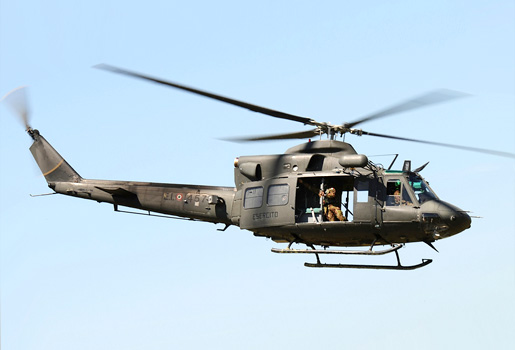

BELL 47
ONE OF THE WORLD’S FIRST PRACTICAL HELICOPTERS
The Bell 47 is a single rotor single engine light helicopter manufactured by Bell Helicopter. It was based on the third Bell 30 prototype, which was the company’s first helicopter designed by Arthur M. Young. The 47 became the first helicopter certified for civilian use on 8 March 1946. More than 5,600 Bell 47s were produced, including those under license by Agusta in Italy, Kawasaki Heavy Industries in Japan, and Westland Aircraft in the United Kingdom. The Bell 47J Ranger is a modified version with a fully enclosed cabin and tail boom. Primary users are United States Army and British Army.
BELL UH-1 IROQUOIS
UTILITY MILITARY HELICOPTER
The Bell UH-1 Iroquois (nicknamed “Huey”) is a utility military helicopter powered by a single turboshaft engine, with two-blade main and tail rotors. The first member of the prolific Huey family, it was developed by Bell Helicopter to meet a United States Army’s 1952 requirement for a medical evacuation and utility helicopter, and first flew in 1956. The UH-1 was the first turbine-powered helicopter produced for the United States military, and more than 16,000 have been built since 1960. The Iroquois was originally designated HU-1, hence the Huey nickname, which has remained in common use, despite the official redesignation to UH-1 in 1962. The UH-1 first saw service in combat operations during the Vietnam War, with around 7,000 helicopters deployed. The Bell 204 and 205 are Iroquois versions developed for the civil market.
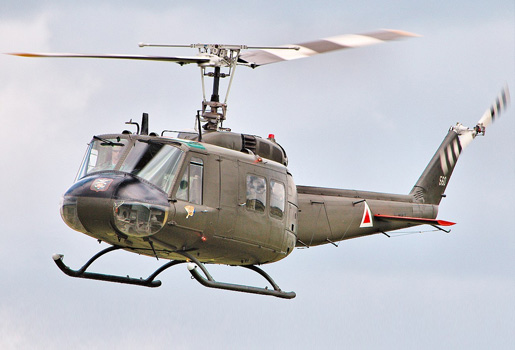
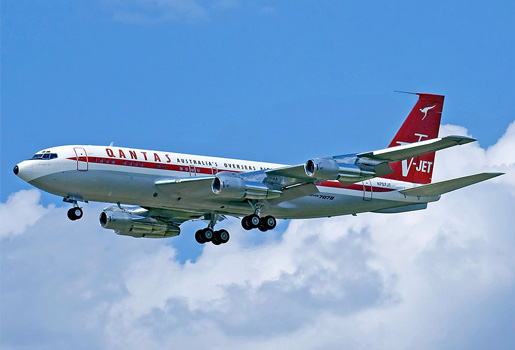
BOEING 707
FIRST SUCCESSFUL COMMERCIAL PASSENGER JETLINER
The Boeing 707 is an American mid-sized, long-range, narrow-body, four-engine jet airliner built by Boeing Commercial Airplanes from 1958 to 1979. Versions of the aircraft have a capacity from 140 to 219 passengers and a range of 2,500 to 5,750 nautical miles (2,880 to 6,620 mi; 4,630 to 10,650 km). Developed as Boeing’s first jet airliner, the 707 is a swept-wing design with podded engines. The 707 was the first jetliner to be commercially successful. Dominating passenger air transport in the 1960s and remaining common through the 1970s, the 707 is generally credited with ushering in the Jet Age. It established Boeing as one of the largest manufacturers of passenger aircraft, and led to the later series of airliners with “7×7” designations. The later 720, 727, 737, and 757 share elements of the 707’s fuselage design.
BRITISH AEROSPACE HAWK 200
SINGLE-SEAT, SINGLE ENGINE LIGHT MULTIROLE FIGHTER
The British Aerospace Hawk 200 designed for air defence, air denial, anti-shipping, interdiction, close air support, and ground attack. In 1984, British Aerospace (now BAE Systems) designed a combat-orientated variant of the Hawk aircraft, designated as Hawk 200. By 1987, the first pre-production samples were being manufactured. The Hawk 200 is with a small visual signature and high manoeuvrability. It has a low-mounted cantilever wing and is powered by a single turbofan engine. It has a new forward fuselage whereby the forward cockpit area is replaced by an electronics bay for avionics and onboard systems, including a fire control computer, multi-mode radar, laser rangefinder and forward-looking infrared (FLIR). It also has an upgraded wing, which also has wingtip missile support as well as greater wing area, increased wing droop, larger flaps and an optional mid-air refueling capability.
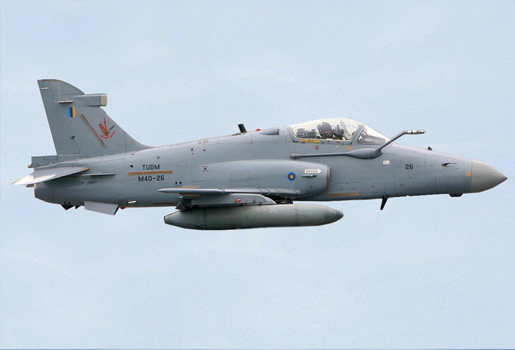
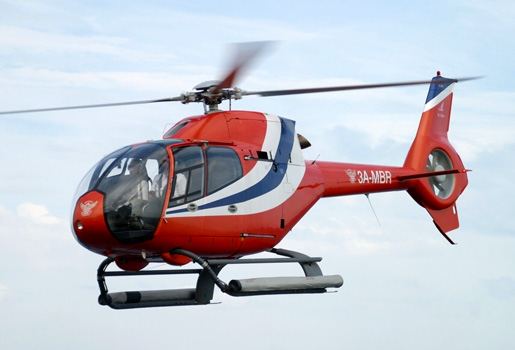
EUROCOPTER EC120 COLIBRI
FIVE-SEAT, SINGLE ENGINE, LIGHT UTILITY HELICOPTER
The Eurocopter (now Airbus Helicopters) EC120 Colibri (Hummingbird), jointly designed and developed by Eurocopter, China National Aero-Technology Import & Export Corporation (CATIC), Harbin Aviation Industries (Group) Ltd (HAIG) and Singapore Technologies Aerospace Ltd (STAero) at Eurocopter France’s Marignane facility, the EC120B was assembled by Eurocopter in France and Australia. In China, the aircraft is produced by Harbin Aircraft Manufacturing Corporation (HAMC) as the HC120. In 2004, HAMC began local manufacturing of the HC120 at their assembly line in Harbin, in northern China. In the Chinese market, both the People’s Liberation Army and multiple local police forces have purchased HC120 helicopters.
EUROCOPTER EC725
LONG-RANGE TACTICAL TRANSPORT MILITARY HELICOPTER
The Eurocopter EC725 Caracal, now called Airbus Helicopters H225M, is a long-range tactical transport military helicopter developed from the Eurocopter AS532 Cougar for military use. It is a twin engine aircraft and can carry up to 28 seated troops along with two crew, depending on customer configuration. The helicopter is marketed for troop transport, casualty evacuation, and combat search and rescue duties, and is similar to the civilian EC225. Primary users are French Armed Forces, Brazilian Armed Forces, Mexican Air Force, and Royal Malaysian Air Force.
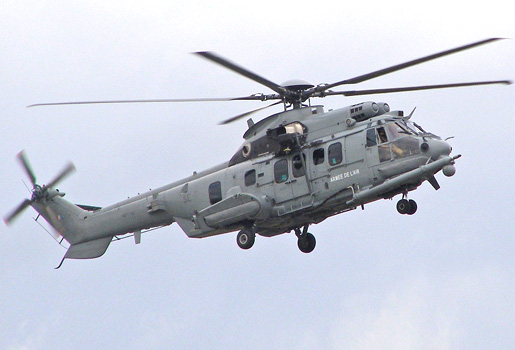
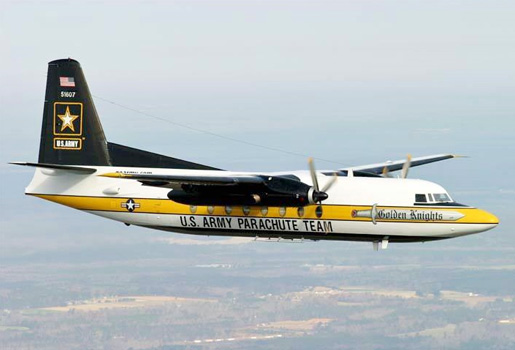
FOKKER F27 FRIENDSHIP
PASSENGER AIRLINER / MILITARY TRANSPORT AIRCRAFT
The Fokker F27 Friendship is a turboprop airliner developed and manufactured by the Dutch aircraft manufacturer Fokker. It has the distinction of being the most numerous post-war aircraft to have been manufactured in the Netherlands; the F27 was also one of the most successful European airliners of its era. The type was introduced on 19 November 1958. A key innovation of the F27 was the adoption of the Rolls-Royce Dart turboprop engine, which produced substantially less vibration and noise which provided improved conditions for passengers; another major comfort feature was cabin pressurisation. Innovative manufacturing techniques were also employed in the aircraft’s construction.
LOCKHEED C-130 HERCULES
FOUR-ENGINE TURBOPROP MILITARY TRANSPORT AIRCRAFT
The Lockheed C-130 Hercules is an American aircraft designed and built originally by Lockheed (now Lockheed Martin). Capable of using unprepared runways for takeoffs and landings, the C-130 was originally designed as a troop, medevac, and cargo transport aircraft. The versatile airframe has found uses in a variety of other roles, including as a gunship (AC-130), for airborne assault, search and rescue, scientific research support, weather reconnaissance, aerial refuelling, maritime patrol, and aerial fire fighting. It is now the main tactical airlifter for many military forces worldwide. The C-130 entered service with the U.S. in 1956, followed by Australia and many other nations. In 2007, the C-130 became the fifth aircraft to mark 50 years of continuous service with its original primary customer, which for the C-130 is the United States Air Force. The C-130 Hercules is the longest continuously produced military aircraft at over 60 years.
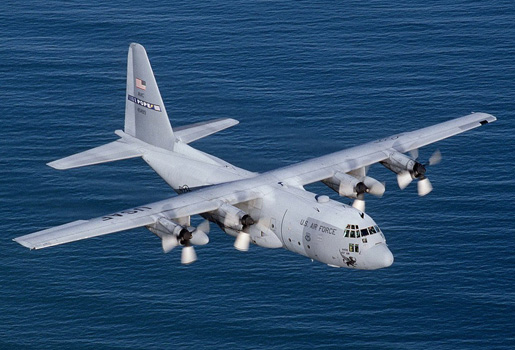
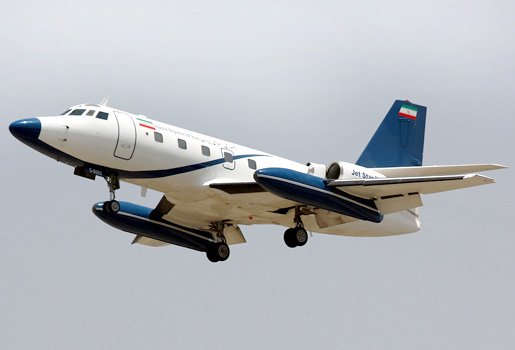
LOCKHEED JETSTAR
FIRST DEDICATED BUSINESS JET
The Lockheed JetStar (company designations L-329 and L-1329; designated C-140 in US military service) is a business jet produced from the early 1960s to the 1970s. The JetStar was the first dedicated business jet to enter service. It was also one of the largest aircraft in the class for many years, seating ten plus two crew. It is distinguishable from other small jets by its four engines, mounted on the rear of the fuselage, and the “slipper”-style fuel tanks fixed to the wings. Primary users are United States Air Force, Mexican Air Force, and Islamic Republic of Iran Air Force.
LOCKHEED MARTIN KC-130
A DEDICATED AERIAL REFUELING TANKER
The Lockheed Martin KC-130 is the basic designation for a family of the extended-range tanker version of the C-130 Hercules transport aircraft modified for aerial refueling. The KC-130J is the latest variant operated by the United States Marine Corps, with 48 delivered out of 79 ordered. It replaced older KC-130F, KC-130R, and KC-130T variants, while one USMC reserve unit still operates 12 KC-130T aircraft. Primary users are United States Marine Corps and Royal Canadian Air Force.
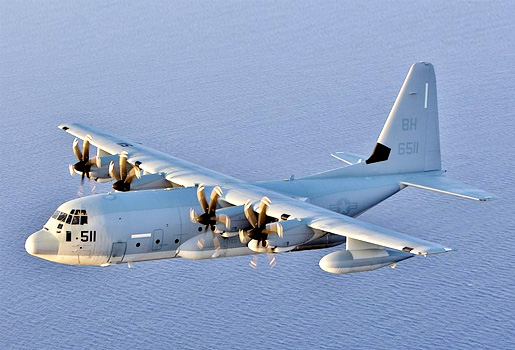
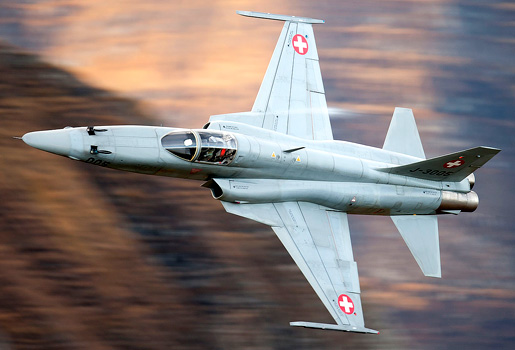
NORTHROP F-5
SINGLE-SEAT LIGHTWEIGHT MULTIROLE AIRCRAFT
The Northrop F-5A and F-5B Freedom Fighter and the F-5E and F-5F Tiger II are part of a supersonic light fighter family, initially designed in the late 1950s by Northrop Corporation. Being smaller and simpler than contemporaries such as the McDonnell Douglas F-4 Phantom II, the F-5 cost less to both procure and operate, making it a popular export aircraft. The F-5 started as a privately funded light fighter program by Northrop in the 1950s. The design team wrapped a small, highly aerodynamic fighter around two compact and high-thrust General Electric J85 engines, focusing on performance and a low cost of maintenance. Though primarily designed for a day air superiority role, the aircraft is also a capable ground attack platform. The F-5A entered service in the early 1960s. Primary users are United States Navy, Republic of China Air Force, Republic of Korea Air Force, and Islamic Republic of Iran Air Force.
PAZMANY PL-1
TWO-SEAT TRAINER AND PERSONAL LIGHT AIRCRAFT
The Pazmany PL-1 Laminar and Pazmany PL-2 are American two-seat trainer and personal light aircraft designed by Ladislao Pazmany to be marketed as a homebuilt aircraft by his company Pazmany Aircraft Corporation. The aircraft was built under licence in Taiwan (Republic of China) as the AIDC PL-1B Cheinshou. It was later followed by an improved version the PL-2. The SLAF Aircraft Engineering Wing developed a modified variant of the PL-2 in 1977, which never saw combat but was used in air shows. Primary users are Republic of China Air Force and Indonesian Air Force.
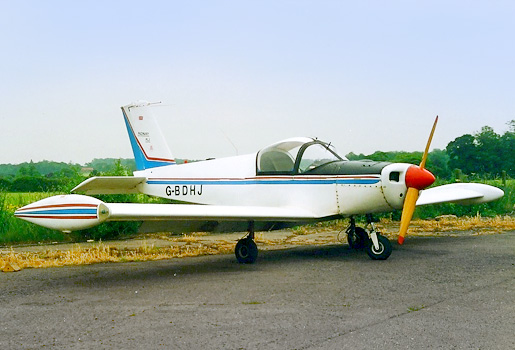
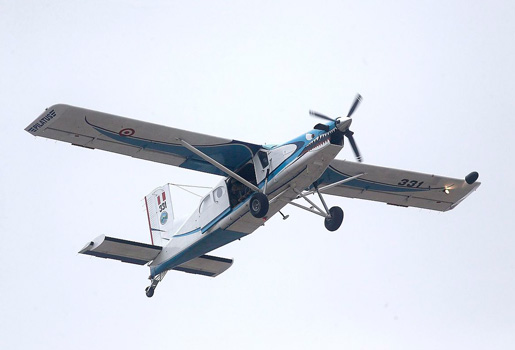
PILATUS PC-6 PORTER
A SINGLE-ENGINED STOL UTILITY AIRCRAFT
The Pilatus PC-6 Porter is designed by Pilatus Aircraft of Switzerland. First flown in 1959, the PC-6 continues in production at Pilatus Flugzeugwerke in Stans, Switzerland. It has been built in both piston engine- and turboprop-powered versions and was produced under licence for a time by Fairchild Hiller in the United States. After around 600 deliveries in six decades, Pilatus will produce the last one in early 2019. Primary users are Civil aviation, Austrian Air Force, Myanmar Air Force, and Swiss Air Force.
PILATUS PC-9
TWIN-SEAT, SINGLE-ENGINE BASIC TRAINER AIRCRAFT
The Pilatus PC-9 is a single-engine, low-wing tandem-seat turboprop training aircraft manufactured by Pilatus Aircraft of Switzerland. Designed as a more powerful evolution of the Pilatus PC-7, the PC-9’s first flight was made in May 1984 after which certification was achieved in September 1985. After this, the first production orders for the type were received from the Royal Saudi Air Force, with deliveries commencing in 1985. Since then, more than 250 airframes have been produced across five different variants and the type is employed by a number of military and civilian operators around the world, including the Swiss Air Force, the Royal Australian Air Force, and the Royal Thai Air Force.
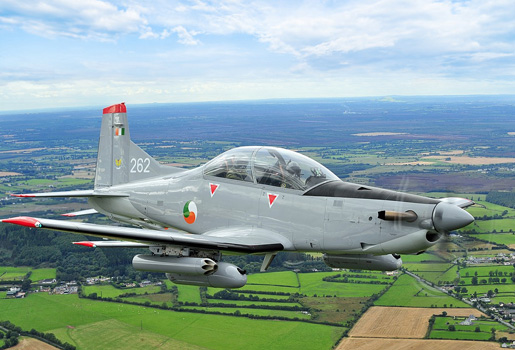
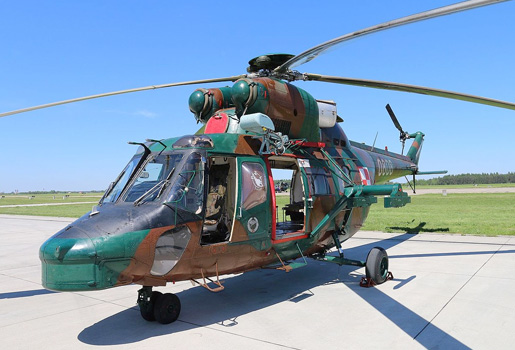
PZL W-3 SOKOL
MULTI-ROLE MILITARY / CIVILIAN UTILITY HELICOPTER
The PZL W-3 Sokół (English: “Falcon”) is a medium-size, twin-engine, multipurpose helicopter developed and manufactured by Polish helicopter company PZL-Świdnik (now AgustaWestland Świdnik). It was the first helicopter entirely designed and produced in Poland. First flight was on 16 November 1979. Primary users are Polish Armed Forces, Czech Air Force, Philippine Air Force, and Myanmar Air Force.
SIKORSKY H-34
TRANSPORT / CLOSE-SUPPORT HELICOPTER
The Sikorsky H-34 (company designation S-58) is a piston-engined military helicopter originally designed by American aircraft manufacturer Sikorsky as an anti-submarine warfare (ASW) aircraft for the United States Navy. It has seen extended use when adapted to turbine power by the British licensee as the Westland Wessex and Sikorsky as the later S-58T. H-34s served, mostly as medium transports, on every continent with the armed forces of 25 countries. It saw combat in Algeria, the Dominican Republic, Nicaragua, and throughout Southeast Asia. Other uses included saving flood victims, recovering astronauts, fighting fires, and carrying presidents. It was the last piston-engined helicopter to be operated by the United States Marine Corps.

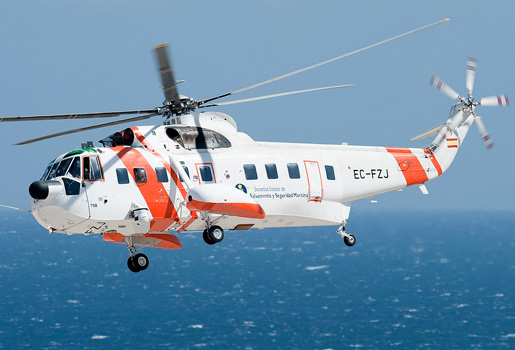
SIKORSKY S-61
BUILT SPECIFICALLY FOR OVERWATER OPERATIONS
It is Medium-lift transport / airliner helicopter. The Sikorsky S-61L and S-61N are civil variants of the successful Sikorsky SH-3 Sea King helicopter. They are two of the most widely used airliner and oil rig support helicopters built. First flight was on March 11, 1959 and Introduction in September 1961. Primary users are CHC Helicopter, Bristow Helicopters, and AAR Airlift.
SIKORSKY UH-60 BLACK HAWK
MEDIUM-LIFT TRANSPORT HELICOPTER
The Sikorsky UH-60 Black Hawk is a four-blade, twin-engine, medium-lift utility helicopter manufactured by Sikorsky Aircraft. Sikorsky submitted the S-70 design for the United States Army’s Utility Tactical Transport Aircraft System (UTTAS) competition in 1972. The Army designated the prototype as the YUH-60A and selected the Black Hawk as the winner of the program in 1976, after a fly-off competition with the Boeing Vertol YUH-61. Named after the Native American war leader Black Hawk, the UH-60A entered service with the U.S. Army in 1979. Primary users are United States Army, Japan Self Defence Forces Colombian Armed Forces, and Republic of Korea Armed Forces.
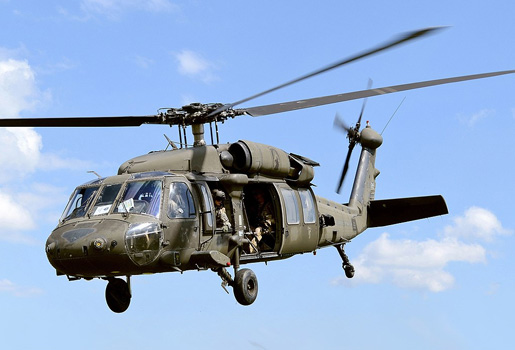

SOKO G-4 SUPER GALEB
ADVANCED TRAINER/LIGHT STRIKE AIRCRAFT
The Soko G-4 Super Galeb (English: Super Seagull), also referred to as N-62, is a Yugoslav single engine, advanced jet trainer and light ground-attack aircraft. The G-4 was designed by the Aeronautical Technical Institute at Žarkovo and manufactured by the SOKO aircraft factory in Mostar as a replacement for the Soko G-2 Galeb in service with the Yugoslav Air Force. Production started in 1984 and lasted until the breakup of Yugoslavia in 1991. A total of 85 aircraft were built, six of which were exported to Myanmar.
